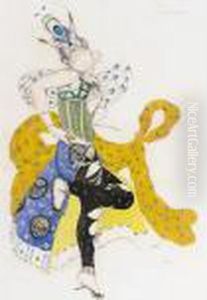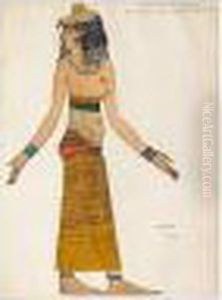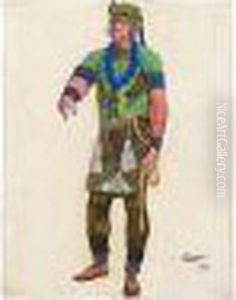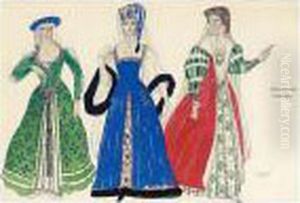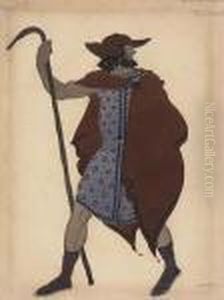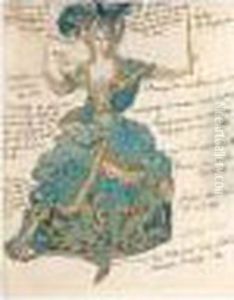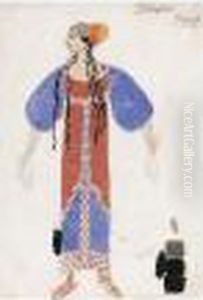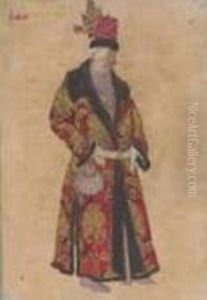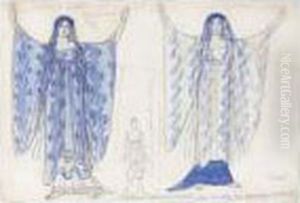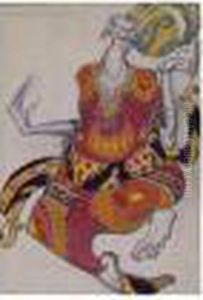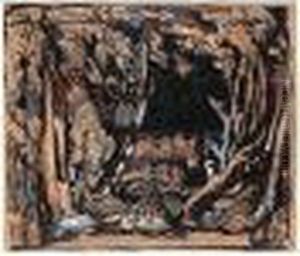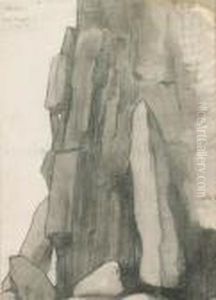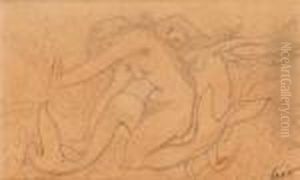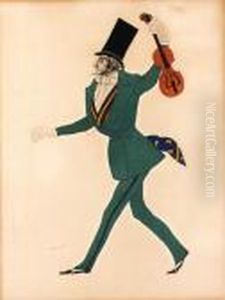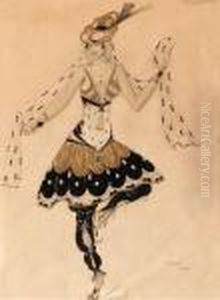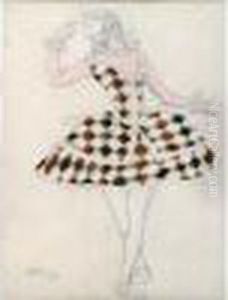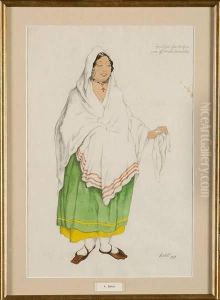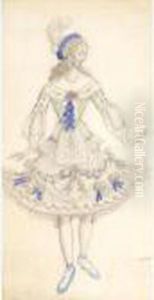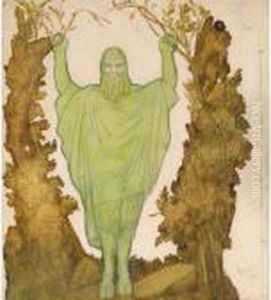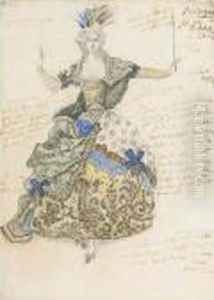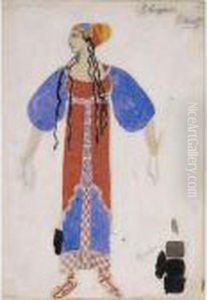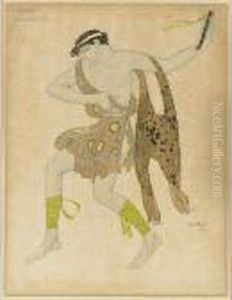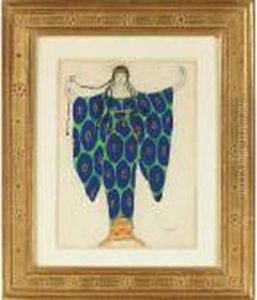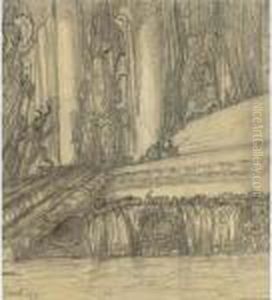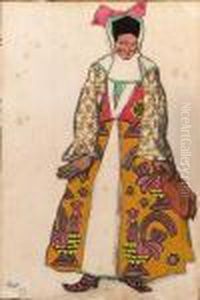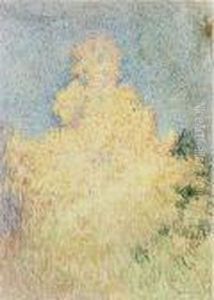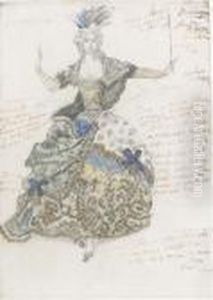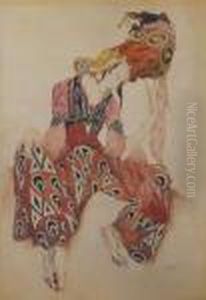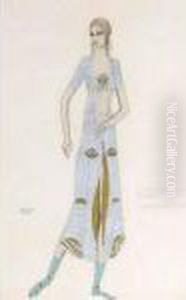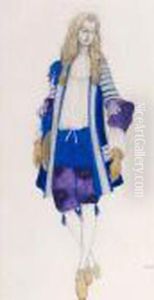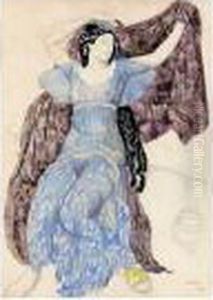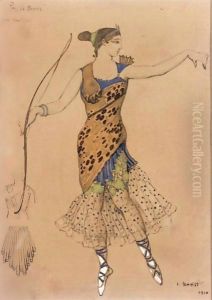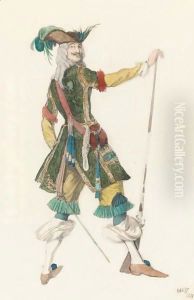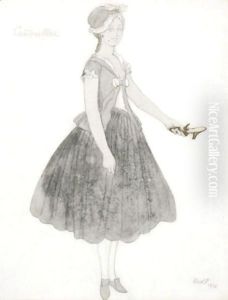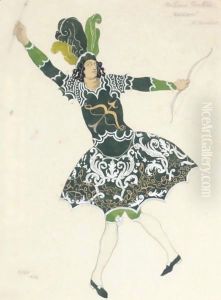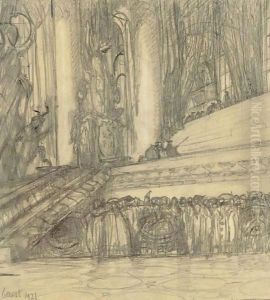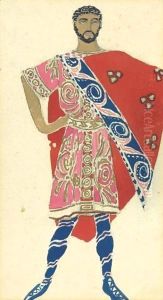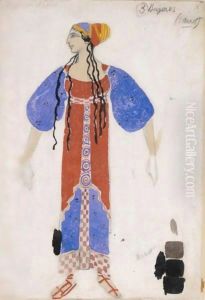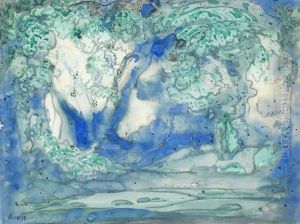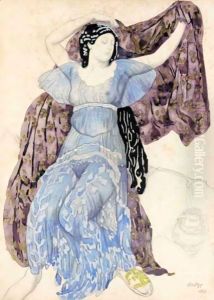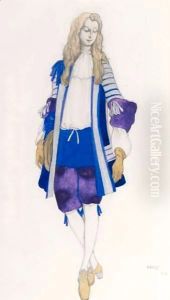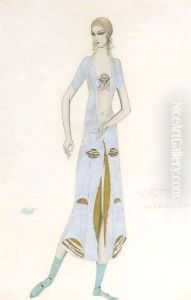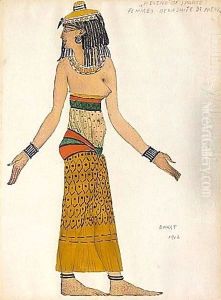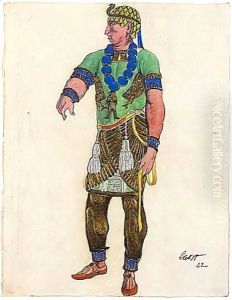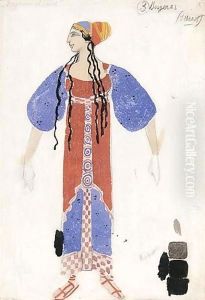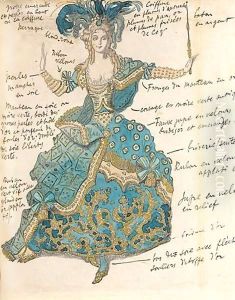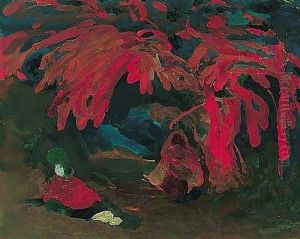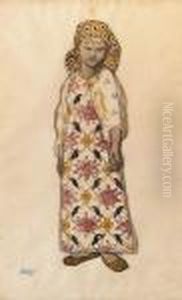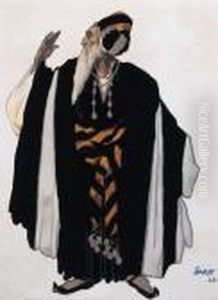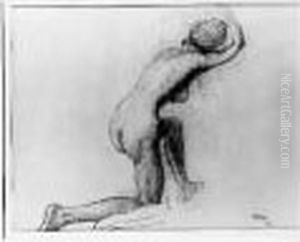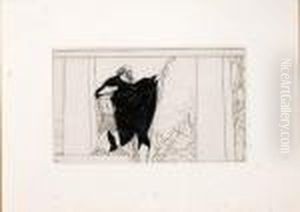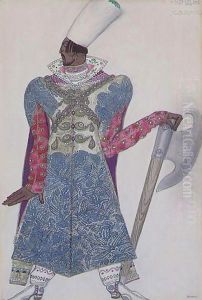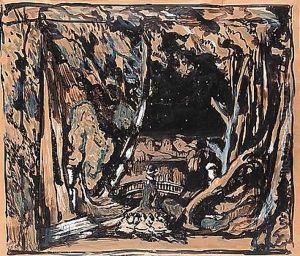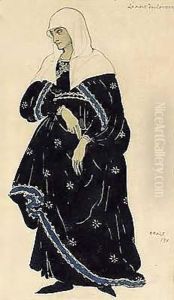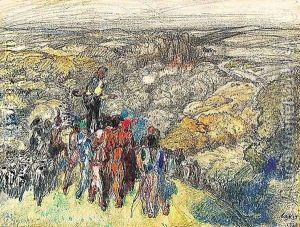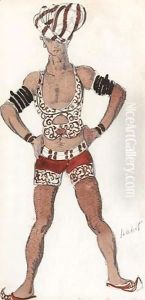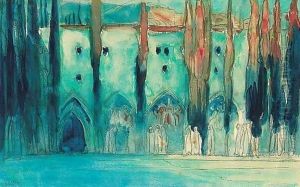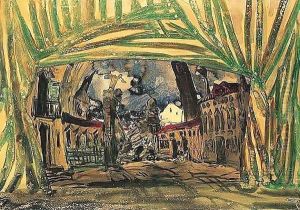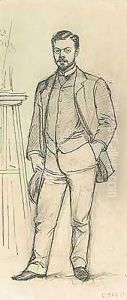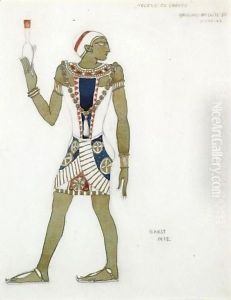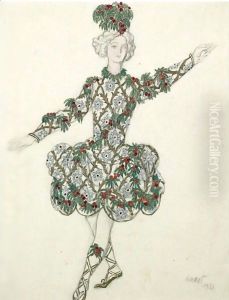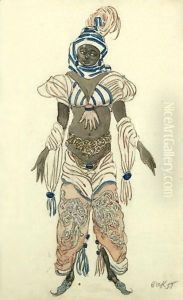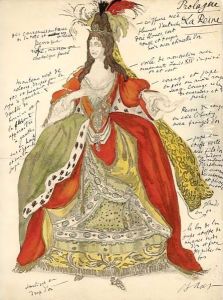Lev Samoilovich Bakst Paintings
Lev Samoilovich Bakst, also known as Léon Bakst, was a Russian painter, scene and costume designer. Born as Lev Samoilovich Rosenberg in Grodno (now in Belarus) on May 10, 1866, he was a prominent member of the Russian art scene and is particularly noted for his work with the Ballets Russes.
Bakst's artistic talents were evident from an early age, and he began his education at the St. Petersburg Academy of Arts. However, due to his Jewish heritage, he encountered obstacles in his career, which were prevalent during that time in Tsarist Russia. In search of artistic freedom and better opportunities, Bakst traveled to Paris, which was the epicenter of the avant-garde.
In Paris, Bakst became associated with Sergei Diaghilev, an influential art critic and promoter, who would later found the Ballets Russes. Through this connection, Bakst began to work extensively in theater, designing sets and costumes that would revolutionize the look of ballet and stage design at the time. His designs were not only innovative in their bold use of color and exotic portrayal of characters but also in how they integrated with the movement of the dancers, enhancing the overall aesthetic and narrative of the performances.
Bakst's work with the Ballets Russes included seminal productions such as 'Cleopatra' (1909), 'Scheherazade' (1910), and 'The Afternoon of a Faun' (1912), among others. His exotic designs played a significant role in the success of these ballets and contributed to the surge of Orientalism in Western art during the early 20th century.
Beyond his theatrical work, Bakst also painted portraits and engaged in various forms of illustration. His style was characterized by its luxuriant use of color, sensuous draughtsmanship, and a penchant for the erotic and the opulent. This style echoed the larger movements of Art Nouveau and Symbolism, which were popular at the time.
Despite his success, Bakst's health began to deteriorate in the 1920s, and he died on December 28, 1924, in Paris. His legacy lives on through his influential designs and his impact on the visual aspects of theater and dance. Bakst's work continues to be celebrated for its artistic innovation and its significant role in the cultural exchange between Russia and the West during the early 20th century.


